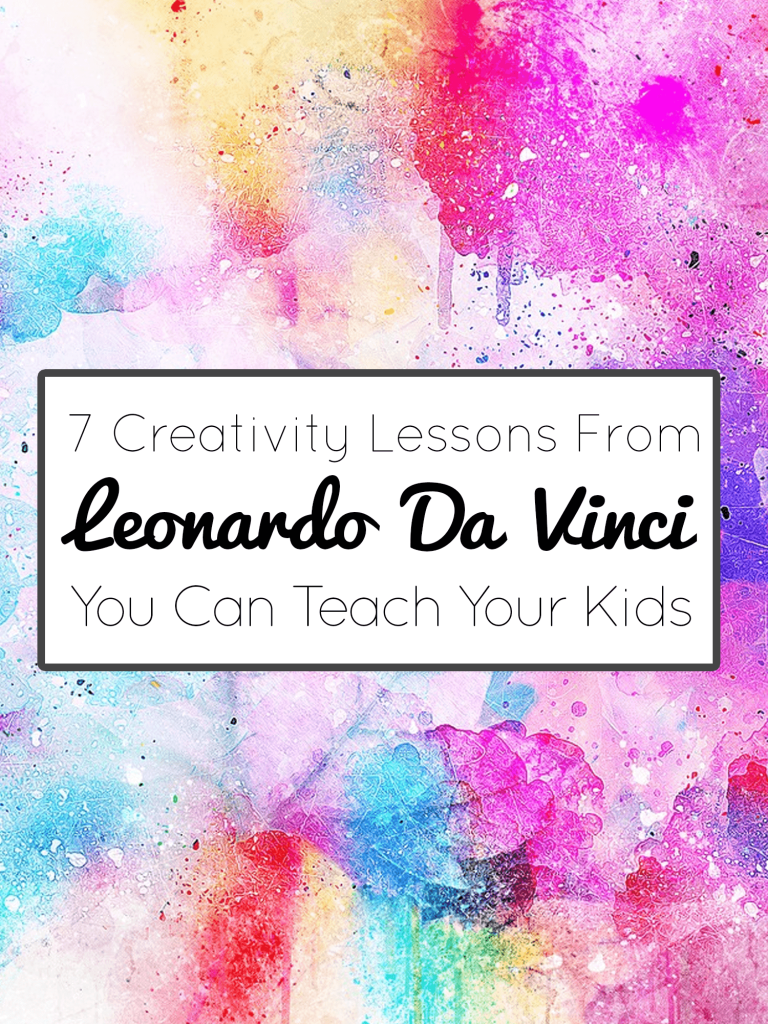7 Creativity Lessons From Leonardo Da Vinci You Can Teach Your Kids
Leonardo Da Vinci is no doubt one of the greatest minds who ever lived. One could even say that the world has never had another one like him. He is well known for his works such as the Mona Lisa and The Last Supper, but not a lot of people know that he is also a musician, engineer, botanist, and inventor; he was a genius. Now, who wouldn’t want to have their children grow up to become another Leonardo Da Vinci one day? In his book, How to Think Like Leonardo Da Vinci: Seven Steps to Genius Every Day, Michael Gelb takes his readers into the mind of one of the 14th-century artist. He cites seven principles that he believes would help anyone take their creativity a notch higher. You can study these principles and teach them to your kids, as well. Here are 7 Creativity Lessons From Leonardo Da Vinci that you can teach your kids:
7 Creativity Lessons From Leonardo Da Vinci:
1. Curiosity
Curiosity is something that’s natural to human beings. That’s the reason mothers are the most quizzed people in the world, asked by their children an average of almost 400 questions a day. However, as kids grow up, their inquisitiveness subsides. In fact, by the age of nine, children become more content and would ask only around 145 questions per day.
Leonardo probably stopped asking a lot of questions in public, too, as he grew up, but his curiosity never dwindled. It fuelled his mind, and he maintained the same passion for everything he studied throughout his life. We can help our children keep their curiosity, too. Instead of allowing the school systems to teach them that answers are more important than questions, we should encourage them never to stop asking questions.
2. Learning From Other People’s Experience
Leonardo understood that wisdom comes from experience. Not just from his own experience, though, but from the experience of others. He loved studying other people’s work but never came to a conclusion too soon. Instead, he viewed other people’s accomplishments as something that needs further study.
He would study them critically and very carefully, and eventually test them on his own. And despite failures and disappointments, Leonardo never gave up. As we teach our children this kind of independent thinking, we can help them become more creative in life.
3. Sharpening Of Senses
An average person can use their senses without really experiencing what they have to offer. They can look without seeing, touch without feeling, and even talk without thinking. The truth is that our senses can be honed and mastered.
They can even be merged. We can help our children become more mindful of what they’re doing and pay close attention to everything they are experiencing no matter how small it may be. This can be achieved through music, art appreciation, crafts, or even as simple as writing a journal. This is the key to enjoying life. This is the key to creativity.
4. Grit
Grit is defined as firmness of mind. In psychology, it’s a positive personal trait that provides an individual with the stamina to “stay the course” amid setbacks. In Gelb’s book, he uses the term “sfumato” to describe Leonardo Da Vinci’s ability to keep his mind open in the face of uncertainty.
The ability to have grit and to remain confident in the face of something you have never faced before is critical to developing creativity. By teaching your child to stay open to ambiguity, you are teaching him to give opportunities for new ideas to emerge.
5. “Whole-Brain” Thinking
We’ve been taught that human beings are either “right-brained” or “left-brained,” that some are better at big picture thinking because they are the former while others are better at logical and analytical thinking because they are the latter. While we don’t devalue the work of Professor Roger Sperry, we can choose to be “whole brain” thinkers instead and teach our kids to be the same. Leonardo shows clue of his ability to think differently through his mind mapping approach to note-taking.
6. Grace And Fitness
Not only did Leonardo possess a great mind; he also had a great body and was always in excellent physical shape. He was obsessed with the human anatomy and taught that people should take care of their bodies if they are to remain productive and creative all their life. Teach your kids to value sports and to start developing their own fitness program while they are young.
7. Systems Thinking
Looking for patterns and connections in everything is one key to creativity. Again, this is where mind mapping may come into play. At their young age, children can be taught how to let their minds go free through this method. When studying for an exam, for instance, instead of the traditional way of memorizing items, teach them to use mind mapping. Other activities they can try to develop systems thinking are creating their weekly schedule or even their short-term or long-term goals. With your guidance, of course.
Is your child the next Leonardo?
Some children are clearly more creative than others. Whether or not creativity comes more easily to your own child, it’s important to understand that everyone has the potential for creativity. Remember these 7 creativity lessons from Leonardo Da Vinci and train your child through each of them. They may not make your child grow to be the next Leonardo, but they sure can help them reach their potential for creativity and learning. Do you think these principles are important? And how would you encourage your child to follow these? Comment your ideas below.





Comments loading...